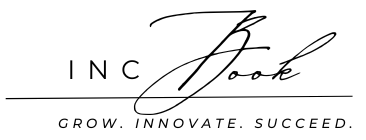Content curation has emerged as a cornerstone of digital marketing, offering a powerful way to engage audiences, build authority, and enhance brand visibility. This article delves into the intricacies of content curation, exploring its significance, strategies, and best practices to leverage its potential.
What is Content Curation?
Content curation is the process of discovering, gathering, and presenting digital content that is relevant to a specific subject or audience. Unlike content creation, which involves producing original material, curation focuses on selecting and organizing existing information from various sources. This curated content can take many forms, including blog posts, social media updates, newsletters, and more.
The Value Proposition of Content Curation
- Time Efficiency: Creating original content is time-consuming and resource-intensive. Curation allows businesses to maintain a steady stream of valuable information without the extensive investment required for content creation.
- Expert Positioning: By curating high-quality content from reputable sources, brands can position themselves as thought leaders in their industry, demonstrating a deep understanding of current trends and developments.
- Audience Engagement: Curated content, when selected thoughtfully, resonates with audiences and encourages interaction. It can drive discussions, shares, and likes, fostering a more engaged community.
- SEO Benefits: Regularly updated content feeds with relevant keywords can improve a site’s search engine ranking. Curation helps in maintaining an active presence online, which is beneficial for SEO.
Key Strategies for Effective Content Curation
1. Understand Your Audience
The foundation of successful content curation lies in a deep understanding of your audience. Identify their interests, pain points, and preferences. Use this knowledge to select content that will resonate with them. Tools like Google Analytics, social media insights, and surveys can provide valuable data about your audience’s behavior and preferences.
2. Choose the Right Sources
Selecting the right sources is crucial. Look for reputable, authoritative, and relevant sources that consistently produce high-quality content. Diversify your sources to provide a well-rounded perspective. Use tools like Feedly, Pocket, and Flipboard to organize and discover content from various sources efficiently.
3. Add Value with Commentary
Simply sharing content isn’t enough. Add your own insights, opinions, and analysis to the curated content. This not only adds value but also personalizes the content, making it more engaging for your audience. Your commentary can highlight the relevance of the content, provide additional context, or offer a different viewpoint.
4. Maintain Consistency
Consistency is key in content curation. Develop a regular schedule for curating and sharing content. Whether it’s daily, weekly, or monthly, ensure that your audience knows when to expect new content. Consistency builds trust and keeps your audience engaged.
5. Utilize Various Formats
Different formats can appeal to different segments of your audience. Experiment with blog posts, infographics, videos, and social media posts to see what resonates most. Multi-format curation not only keeps your content fresh but also increases its reach and engagement.
6. Monitor and Adjust
Track the performance of your curated content to understand what works and what doesn’t. Use analytics tools to measure engagement, shares, and feedback. Adjust your curation strategy based on these insights to continually improve your content offering.
Tools for Content Curation
1. Feedly
Feedly is a popular RSS feed reader that helps you organize and read content from your favorite websites in one place. It allows you to categorize sources, making it easier to curate content by topics.
2. Pocket
Pocket allows you to save articles, videos, and stories from any publication, page, or app. This tool is great for curating content you find while browsing the web, which you can later organize and share with your audience.
3. Flipboard
Flipboard is a news and social network aggregator that presents content in a magazine format. It’s useful for discovering new content and presenting it in an engaging, visually appealing way.
4. Curata
Curata is a content curation and marketing platform designed for businesses. It uses machine learning to recommend content and provides analytics to measure the effectiveness of your curation efforts.
5. Scoop.it
Scoop.it enables users to curate and share content through topic-based boards. It’s a powerful tool for both discovering new content and building a community around specific interests.
Best Practices for Content Curation
1. Always Credit the Source
Give proper credit to the original creators of the content you curate. This not only respects intellectual property rights but also builds goodwill and relationships with other content creators.
2. Stay Ethical
Ensure that the content you curate aligns with your brand values and ethical standards. Avoid sharing content that could be misleading or inaccurate, as this can harm your credibility.
3. Engage with Your Audience
Encourage your audience to engage with the curated content. Ask questions, invite comments, and foster discussions. This interaction can provide valuable feedback and strengthen your community.
4. Focus on Quality Over Quantity
It’s better to share a few pieces of high-quality, relevant content than to flood your audience with numerous low-quality posts. Quality content is more likely to be shared and appreciated by your audience.
5. Regularly Update Your Curation Strategy
The digital landscape is constantly evolving, and so should your content curation strategy. Stay updated with the latest trends, tools, and best practices to ensure your approach remains effective and relevant.
The Future of Content Curation
As digital marketing continues to evolve, content curation will play an increasingly vital role. The rise of artificial intelligence (AI) and machine learning is set to transform content curation, making it more efficient and personalized. AI-powered tools can analyze vast amounts of data to recommend content that is highly relevant to specific audiences. This will enable marketers to deliver even more targeted and engaging content.
Moreover, the integration of augmented reality (AR) and virtual reality (VR) in content curation could provide immersive experiences, further enhancing audience engagement. As these technologies develop, they will open up new possibilities for content curation, making it an even more powerful tool in the digital marketer’s arsenal.
Conclusion
Content curation is more than just sharing links; it’s about creating value for your audience by delivering relevant, high-quality information. By understanding your audience, choosing the right sources, adding value with your insights, and using the right tools, you can master the art of content curation. This not only enhances your brand’s authority and engagement but also keeps you at the forefront of your industry. As technology advances, the potential for content curation will only grow, making it an indispensable component of any successful digital marketing strategy.


